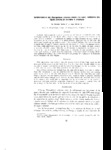Supervivencia del Phytophthora infestans (MONT) de Bary, causante del tizón tardío de la papa y jitomate
Abstract
Mediante observaciones de campo se encontró que las lesiones primarias del tizón tardío de la papa ocurren en la base de los tallos o bien en hojas cercanas o en contacto con el suelo. Lesiones semejantes se presentaron en plantas de papa creciendo en suelo traído al invernadero de un terreno donde no se había sembrado papa por más de dos años; del mismo suelo se aisló, en un medio selectivo, a Phytophthora infestans. Con esta información se puede concluir que P. infestans sobrevive de una época de cultivo a la siguiente dentro del suelo. Dicha supervivencia puede ser de más de dos años. En tejidos de papa, jitomate y maravilla (Mirabilis jalapa), infectados por P. infestans se encontraron con frecuencia estructuras del tipo de oosporas pero desprovistas de anteridio. Si estas estructuras pertenecieron a P. infestans, su papel sería muy importante en la supervivencia del hongo. Resultados preliminares indican una posible influencia del genotipo de la planta en la formación de las estructuras del tipo oospora. ABSTRACT: Field observations have indicated that the primary lesions of late blight occur on the lower part of the stems or on the leaves close to or in contact with the soil. Similar lesions appeared on potato plants grown on soil that have been brought into the green-house from a field where no potatoes have been planted in the last three years. Phytophthora infestans was isolated from the same soil by means of a selective media. From this information it may be concluded that P. infestans survives from one growing season to the next in the soil. This survival may be effective for more than two years. Oospore-like structures but without antheritium were found in tissues of potatoes, tomatoes and Mirabilis jalapa infected by P. infestans. If this oospore-like structures were related to P. infestans, they would play an important role in its survival due to the protective membrane and great numerical abundance. Preliminary data suggest a possible effect of the genotype of the host plant on the formation of oospore-like structures.
Collections
- Agrociencia [55]

